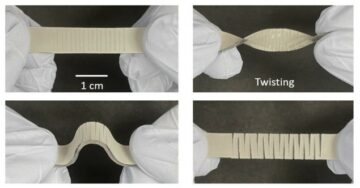On-site construction for the €1.3bn Square Kilometre Array (SKA) began in Australia and South Africa on 5 December for what will be the world’s largest radio-astronomy infrastructure when complete in 2028. Work began 18 months after the Square Kilometre Array Observatory (SKAO) Council gave the green light for the facility.
First conceptualized 30 years ago, the SKA project underwent several years of design and engineering work. The SKAO – an intergovernmental organization with 16 partner countries including eight members – will manage the construction and operation of the telescope from its headquarters at Jodrell Bank in the UK.
South Africa will have 133 SKA dishes during this phase, which will be added to the existing 64 that belong to the SKA-precursor telescope – MeerKAT – to form a mid-frequency instrument. Australia will host a low-frequency array of 131,072 antennas, enlarging the area covered by radio frequencies from the two telescopes.
The first two antenna stations are due to be complete by May 2023, while the first dish is set to be installed in April 2024, followed by three to four dishes each month.
On 5 December an event was held at the site of the SKA-Low telescope in Western Australia, attended by Philip Diamond, SKAO director-general. Meanwhile, SKAO council chair Catherine Cesarsky appeared at a ceremony in South Africa’s Northern Cape province where the SKA-Mid telescope will be built.

Construction go-ahead for €2bn Square Kilometre Array
So far about €500m has been allocated towards construction, with more than 40 contracts worth more than €150m having been delivered over the past 18 months.
During the ceremony to mark the start of construction, Australia’s minister of science and industry, Ed Husic, along with South Africa’s minister of science and innovation Blade Nzimande jointly announced more than €200m for Australian and South African companies to deliver some of the extensive infrastructure required for the telescopes.













